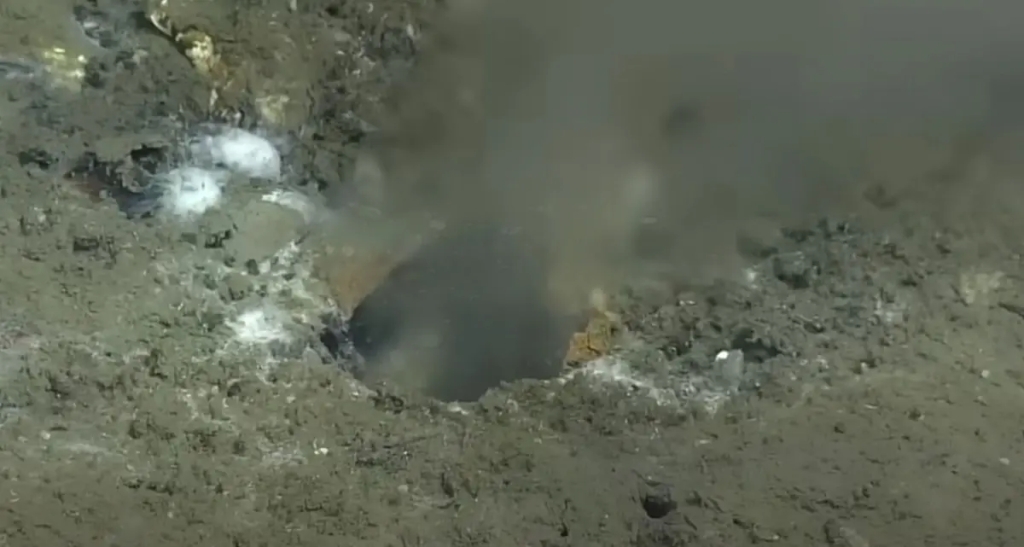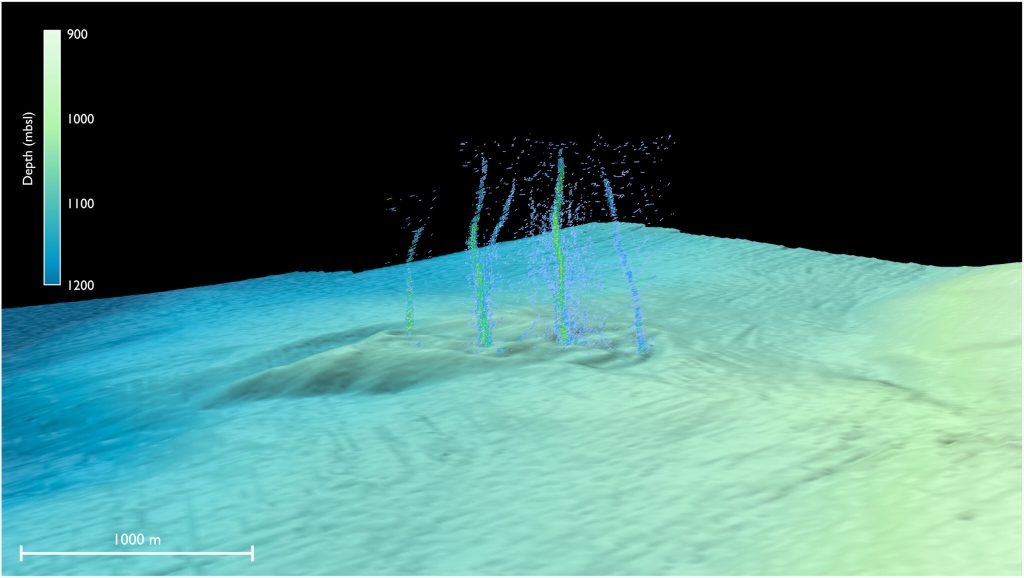Apparently, the popular 𝘤𝘩𝘪𝘭𝘥ren’s song about the hole in the bottom of the sea is a geological reality. And it’s leaking.

Image Credit: University of Washington
When considering the immense expanse of Earth’s oceans, one would assume the ocean floor to be an inherent component of the planet, impervious to any leakage, so to speak.
But, according to new research results, that’s exactly what’s happening.
Remarkably, the water leakage from the hole occurs upwards into the ocean rather than downwards into the underlying earth.
In an official statement, scientists from the University of Washington revealed that the hole on the seabed is situated above the Cascadia Subduction Zone fault off the coast of Oregon.
Named “Pythias’ Oasis” after an oracle who experienced prophetic visions while sitting atop a thermal spring, this low-salinity, mineral-rich spring has captivated scientists ever since its discovery in 2015. Recently, a new study conducted by the academic institution and published earlier this year in the journal Science Advances, indicates that the slightly brackish water emanating from this spring might function as a type of geological lubricant. Without this essential fluid, the tectonic plate supporting the spring could potentially undergo a significant shift.

Sonar image of the Pythias Oasis site shows bubbles rising from the seafloor about two-thirds of a mile deep and 50 miles off Newport, Oregon. Image Credit: Philip et al./Science Advances
The, researchers discovered the leak in 2015, when they observed unusual sonar readings showing the presence of peculiar bubbles.
“They explored in that direction and what they saw was not just methane bubbles, but water coming out of the seafloor like a firehose,” said Evan Solomon, a UW associate professor of oceanography and seafloor geology specialist. “That’s something that I’ve never seen, and to my knowledge has not been observed before.”
It was the water’s temperature that indicated its likely source to be the fault.
“The fluid is coming straight from the Cascadia megathrust, where temperatures are an estimated 300 to 500 degrees Fahrenheit.”
The release of fluid through these strike-slip faults from the offshore megathrust interface holds significance as it reduces the fluid pressure between sediment particles, consequently intensifying the friction between the oceanic and continental plates.
“The megathrust fault zone is like an air hockey table,” Solomon said. “If the fluid pressure is high, it’s like the air is turned on, meaning there’s less friction and the two plates can slip. If the fluid pressure is lower, the two plates will lock – that’s when stress can build up.”
However, the scientists noted in an update that, contrary to what has been circulating in the media, they are not alarmed by the discovery of this geologic feature, which does not trigger earthquakes as some sources falsely claimed, but may regulate friction in the fault zone. The discovery does not change the current risk of a large earthquake on the Cascadia Subduction Zone, they added.
This seafloor leak is the first of its kind to be identified, but there is a possibility of undiscovered nearby leaks of a similar nature.





